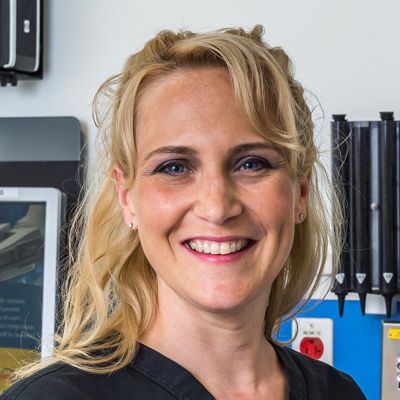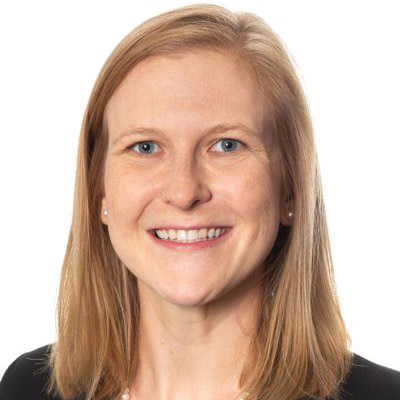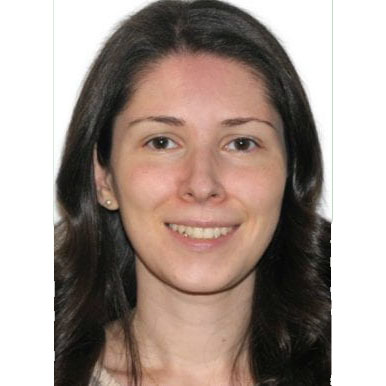Session Details
Drowning Prevention and Safe Sleep
SALONS A/B/C/D
2. To explore how the CDC's syndromic surveillance data can be utilized to monitor drowning injury trends.
3. To recognize the impact that social determinants of health have on the rate of sleep related deaths in infants.
4. To identify how SUIDs disproportionately occur in Chicago communities experiencing economic hardship and inequitable access to care.
5. To examine how hospitals can effectively partner with community-based organizations for safe sleep programs.

OSF St. Francis Medical Center
teresa.m.riech@osfhealthcare.org

University of Arkansas for Medical Sciences
Arkansas Children's Hospital
kmelchiors@uams.edu
Unintentional Drowning Deaths Among Children and Adolescents with Autism Spectrum Disorder in the United States, 1999-2020

Division of Injury Prevention
National Center for Injury Prevention and Control
Centers for Disease Control and Prevention
whf3@cdc.gov
Shericka Harris, MSPH
Briana Moreland, MPH
Sarah C. Tinker, PhD, MPH
Tessa Clemens, PhD, MEd
Drowning is a leading cause of death among children worldwide, and children with autism spectrum disorder (ASD) are at an increased risk of drowning. A previous study in the United States found that, compared to deaths without ASD listed as a contributing cause, deaths with ASD listed as a contributing cause were more likely to be unintentional injuries, including specifically deaths by drowning. In Australia, children and adolescents with ASD were three times more likely to drown when compared to those without ASD. The objective of this study was to explore unintentional drowning deaths in the United States among children and adolescents where ASD was identified as a contributing cause of death.
Mortality data were obtained from the multiple cause-of-death data files in the National Vital Statistics System to identify children and adolescents (<1-19 years) with a contributing cause of death of ASD who died between 1999 and 2020. Using the International Classification of Diseases, 10th Revision (ICD-10), unintentional drowning deaths were identified using underlying cause-of-death codes W65-W74, V90, and V92 and ASD was identified using the multiple cause-of-death ICD-10 code F84.0 (childhood autism).
There were 91 unintentional drowning deaths where ASD was listed as a contributing cause of death among children and adolescents in the United States from 1999-2020. Among children who drowned and had a contributing cause of death of ASD, the highest proportions were aged 5-9 years (51.6%), resided in the South (44.0%) and the Midwest (31.9%), and drowned in natural water (37.4%), bathtubs (25.3%), and swimming pools (24.2%). These results differ from the demographic and geographic characteristics in the overall population of children who drown. Among all children who drown, the highest proportions were aged 1-4 years (41.7%), resided in the South (48.9%) and West (22.6%), and drowned in swimming pools (33.2%) and natural water (32.9%).
Children 5 to 9 years of age accounted for over half of the drowning deaths with ASD listed as a contributing cause among children and adolescents. Diagnosis of ASD generally occurs after the age of 4 years which may explain a greater percentage of drowning deaths occurring after the age of 4 among children and adolescents with ASD listed as a contributing cause of death. Further research on the demographic and/or behavioral characteristics may elucidate the relationship between drowning risk and ASD. Due to limitations in death certificate data, the number of children and adolescents with ASD who fatally drowned is likely underestimated in this analysis.
1. Identify differences in drowning deaths among children with ASD as a contributing cause of death compared to drowning deaths in the overall population.
2. Describe demographic characteristics of children who drowned and had ASD listed as a contributing cause of death.
3. Recognize opportunities for improved data collection, to better understand the risk of drowning among children with ASD.
Using Syndromic Surveillance for Unintentional and Undetermined Intent Drowning Surveillance in a Large Metropolitan Area

Division of Emergency Medicine
Baylor College of Medicine
Houston, Texas
Rohit P. Shenoi, MD
Nicholas Peoples, MSc
Jennifer L. Jones, MS
Ned Levine, PhD
The CDC adapted a drowning syndromic surveillance definition for use in National Syndromic Surveillance Program (NSSP) data. However, the accuracy of the syndrome in capturing emergency department (ED) and urgent care (UCC) visits [collectively termed Syndromic Surveillance (SS) visits], and its use in drowning surveillance is unknown. We aimed to determine the percentages of true-positive unintentional and undetermined intent drowning (UUID) cases for all ages in a large metropolitan area based on all cases captured by this definition. A secondary aim was to describe the burden and injury trends of UUID syndromic surveillance visits.
We applied the CDC definition for drowning to data available in NSSP for the 8-county metropolitan Houston area for the years 2018-2022. Data were analyzed after querying the dataset for ICD-10-CM codes for UUID cases and manually reviewing the text describing the chief complaint and discharge diagnosis for UUID SS visits. To calculate the percentage of true-positives, we divided the number of UUID cases by the total visits captured by the syndromic definition for drowning. UUID drowning rates per 100,000 SS visits were calculated as the number of SS visits for UUID divided by the total number of SS visits and multiplied by 100,000.
There were 24,742,818 (ED: 23,870,676; UCC: 872,142) SS visits captured by the NSSP for metropolitan Houston between 2018 to 2022. During the same period, there were 2,759 SS visits for UUID (Mean rate:11.15 UUID SS visits/100,000 SS visits. There were 2,019 cases (72.5%) with ICD-10-CM drowning codes; 2,015 (99.8%) were classified as UUID. Of the remaining 740 cases with no ICD-10-CM codes, 690 (93.2%) cases had a chief complaint or discharge diagnosis text indicating “drowning” or “submersion” or “underwater” or “inhaled water” or “swallowed water” in relation to contact with a body of water and/or specific misspellings. Among all 2,759 visits classified as drowning based on the syndromic surveillance definition for drowning, there were 2,705 (98.0%) cases classified as Yes (true-positive) UUID and 54 (2.0%) classified as “No”. UUID SS visits were lowest during 2020 (9.6/100,000 SS visits). Males and minority groups constituted 48% and 38% of SS visits for UUID respectively. Children aged 0-17 years comprised 79.3% of SS visits for UUID. UUID SS rates for minority groups (11.75/100,000 SS visits) and non-minority groups (11.81/100,000 SS visits) were similar. UUID SS rates for males (13.7/100,000 SS visits) were higher than females (8.5/100,000 SS visits); and higher for non-Hispanics (12.3/100,000 SS visits) compared to Hispanic persons (10.4/100,000 SS visits).
Syndromic surveillance data are a novel source for conducting drowning surveillance in a large metropolitan region. The CDC’s syndromic surveillance definition for drowning accurately captures nearly all SS visits of drowning victims who present to the ED or UCC. It can be used to evaluate racial and ethnic disparities in non-fatal drowning rates.
1. Understand the accuracy of syndromic surveillance in non-fatal drowning surveillance
2. Learn the utility of syndromic surveillance in monitoring drowning injury burden and trends
3. Recognize the usefulness of syndromic surveillance in evaluating racial and ethnic disparities in non-fatal drowning rates
The Continued Trauma of Unsafe Sleep: A Retrospective Review of Sudden Unexpected Infant Deaths at a Large Tertiary Care Center

Division of Pediatric Emergency Medicine, St. Louis Children's Hospital
Washington University in St. Louis School of Medicine
pintea@wustl.edu
Michelle Pintea, MD, MPH
Kathryn Spectorsky, MD
Lindsay D. Clukies, MD, FAAP
Deaths from unsafe sleep environments, which include sudden unexpected infant deaths (SUID), accidental suffocation, and strangulation, continue to account for roughly 3,400 child fatalities annually in the United States. While several seminal national educational campaigns, such as Back to Sleep in 1994, decreased the national SUID death rate, Missouri continues to see high rates of sleep-related deaths, with over one hundred sleep related deaths in infants in 2021. In this study, we seek to identify demographics of infants with a cause of death identified as SUID at a large tertiary children’s hospital.
Patients less than 12 months of age who presented to a level one pediatric trauma center were identified using an established National Trauma Database. A retrospective chart review was conducted, identifying patients with ICD codes including suffocation, asphyxiation, and unsafe sleep environment. Events surrounding the death of the included patients were identified by autopsy report, or if unavailable, by chart documentation at time of presentation. Patients with an underlying medical etiology for their death were excluded. Charts were reviewed for documented parental ages, circumstances regarding event, autopsy report, previous encounters in the medical system, and documented safe sleep conversations. Deprivation index (DI) was assigned by home zip code based on a principal components analysis of six American Community Survey measures by the US census.
A total of 69 patients were identified from 2013– 2022, of which 55 met the inclusion criteria. Of the included patients, 60% had autopsy findings consistent with suffocation or an unsafe sleep event. Of those patients without autopsies or those with inconclusive autopsy findings, all had documentation in the chart regarding unsafe sleep. The average DI of the included patients was .489, a statically significant difference (p<.0001) than the national mean. On our review, 44% of patients had a documented encounter in the Electronic Medical Record (EMR) prior to their death and only 33% had documentation regarding safe sleep-in previous visits in the EMR.
Unsafe sleep, a preventable death, still account for numerous infant deaths. The difference in DI index between our patients and the national average highlight that social determinants of health continue to play a role in preventable death and injury. Our data suggests that only approximately one third of patients had a conversation documented regarding safe sleep before their death. Based on these findings, a targeted injury prevention intervention around safe sleep and documentation is planned.
1. Attendees will learn of the continuing high rates of sleep-related deaths, especially in Missouri and that social determinants of health continue to play a role in preventable death and injury.
2. Attendees will learn the importance of documentation around safe sleep.
3. Attendees will be able to explain the importance of a targeted injury prevention intervention aimed at decreasing the number of sleep-related deaths.
Connecting Data to “Close the Loop” with Birth Hospitals to Prevent SUID

Director of Community Health for Pediatrics
Rush University Children’s Hospital
gina_lowell@rush.edu

Illinois Department of Public Health
kyran.p.quinlan@illinois.gov
Gina Lowell, MD, MPH
Rojin Ahadi, MPH
Meredith Reynolds, MD
Christie Lawrence, DNP, RNC-NIC
Kyran Quinlan, MD, MPH
Each year in the US, about 3,400 infants die from Sudden Unexpected Infant Death (SUID). In Cook County IL, SUID occurs on average nearly once a week. Education and prevention opportunities exist for hospitals who birth these infants, yet birth hospitals rarely hear when an infant they discharged dies from SUID. We leveraged access to available data sources to calculate SUID rates of Cook County birth hospitals and their geographical proximity with those communities most impacted by SUID.
Data from the Cook County Medical Examiner’s Office for SUIDs that occurred between 1/1/2019 and 12/31/2021 were analyzed for hospital of birth. The Illinois Department of Public Health (IDPH) provided resident live birth data by Cook County birth hospital for the 11 birth hospitals with the greatest number of infants discharged who subsequently died from SUID during this time frame. SUID rates (cases/1,000 resident live births) were calculated for each birth hospital. SUIDs in Cook County during this time period were mapped using RStudio and compared with Chicago Health Atlas data visualizing community areas of high economic hardship and with mapping of Cook County birth hospitals.
From 2019-2021, the eleven hospitals included in this analysis delivered between less than 1,000 to over 35,000 infants per birth hospital. SUID rates for birth hospitals ranged from 0.34 to 6.8 cases per 1,000 resident live births. Geographical distribution of SUIDs showed high concentration in areas geographically associated with those birth hospitals with the highest SUID rates, and with those community areas experiencing high economic hardship. The birth hospital with the highest SUID rate was 3 times that of the birth hospital with the second highest SUID rate, and 20 times that of the birth hospital with the lowest SUID rate. The birth hospital with the highest SUID rate experienced a pandemic-related closure of its labor and delivery unit, as did the birth hospital with the 7th highest SUID rate.
Birth hospitals in community areas most impacted by SUID experience variably and disproportionately high SUID rates. SUID occurs in areas of high economic hardship where closures of labor and delivery units reflect disinvestment and deepen inequitable access to trusted care. No system currently exists for birth hospitals to learn of SUIDs that happened to babies they discharged. Describing this data is the first step towards “closing the loop” with birth hospitals. Leveraging different public health data sources to describe these disparities creates opportunities to reach stakeholders at birth hospitals invested in preventing SUID through sharing data, clinical practices, hospital policies, community approaches and passion to promote safe sleep during the critical opportunity birth hospitals have surrounding the birth of a baby.
1. Recall 3 data sources used to illuminate the SUID rates for infants discharged from Cook County birth hospitals.
2. Understand the non-uniformity of SUIDs experienced by infants discharged from Cook County birth hospitals serving communities with varying economic hardship.
3.Consider how historical disinvestment, economic hardship and the pandemic intersect to impact hospital systems serving communities most impacted by SUID.
Community Partnership Approaches to Safe Sleep (CPASS) Program Evaluation

Associate Professor of Pediatrics and Emergency Medicine, Harvard Medical School
Immediate Past-President, Injury Free Coalition for Kids
lois.lee@childrens.harvard.edu
Lois K. Lee, MD, MPH, FACEP, FAAP
Alison Hanes, MPH
Bonnie Kozial, BA
Linda Radecki, MS
Jennifer McCain, MD
Asim Abbasi, MD
Sevilay Dalabih, MD
Gina Lowell, MD
Ben Hoffman, MD, MPH
Sudden unexpected infant death (SUID) continues to be a leading cause of death in U.S. infants, with significant disparities by race and socio-economic status. Infant safe sleep behaviors are associated with decreasing SUID risk, but challenges remain for families to practice these routinely. The objective of this program was to implement and evaluate a novel approach for an infant safe sleep pilot program, partnering hospitals with community-based organizations (CBOs) serving at-risk communities.
Community Partnership Approaches to Safe Sleep (CPASS) was a prospectively implemented infant safe sleep program developed by the American Academy of Pediatrics and executed from December 2021 through October 2022. The program consisted of: 1) monthly learning community program calls; 2) dissemination of culturally-sensitive, language specific education; and 3) distribution of safe sleep survival kits (sleep sack, cribette, sheet, pacifier, educational materials). CPASS included hospitals partnering with CBOs across 5 US cities: Portland, OR, Little Rock AR, Chicago, IL, Birmingham, AL, and Rochester, NY. Surveys of sites and families were used for program outcome evaluations: 1) site participation in CPASS activities; 2) use of kits distributed to families; and 3) parent/caregiver safe sleep knowledge and behavior (reported as mean nights (M), standard deviation (SD), and range of nights) after kit/education provision.
There was strong site participation in the CPASS learning community activities with at least 2 representatives (1 hospital-based, 1 CBO-based) from each site attending every call. Across the 5 sites, 1,002 safe kits were distributed, the majority (>85%) to families with infants < 1 month old. Among participating families 45% reported no safe sleep location before receipt of the kit and reported new safe infant sleep knowledge regarding no bedsharing (30%); sleeping on back (27%); and sleep environment (25%). Family adherence to nighttime safe sleep recommendations included: 1) no bedsharing (M 6.0, SD 1.8, range 0-7); 2) sleep on back (M 6.3, SD 1.7, range 0-7); and 3) sleep on uncluttered mattress (M 6.0, SD 2.0, range 0-7). Overall, hospital-CBO relationships were strengthened with program participation. Lessons learned included importance of: 1) resources in languages beyond English and Spanish; 2) future social media for enhanced outreach; 3) culturally and linguistically appropriate messaging for families; and 4) shifting SUID narrative as a preventable event. CPASS participation influenced counselling, including moving from awareness to action and celebrating and building upon family safe sleep knowledge. Sharing local SUID data and greater incorporation of terms like ‘suffocation’ and ‘strangulation’ were found to be useful with families.
The CPASS pilot provides a new, innovative model for building strategic hospital-community partnerships for infant safe sleep community-based programs. CPASS empowered families with knowledge and resources to practice infant safe sleep. Important lessons learned included improved ways to center and communicate with families.
1. Describe evidence-based interventions to improve infant safe sleep behaviors to prevent infant sleep-related death.
2. Examine how a community-based safe sleep program enhanced knowledge and safe sleep environment behaviors among families with newborns.
3. Discuss the benefits and challenges of hospital partnerships with community-based organizations for implementing safe sleep programs.
